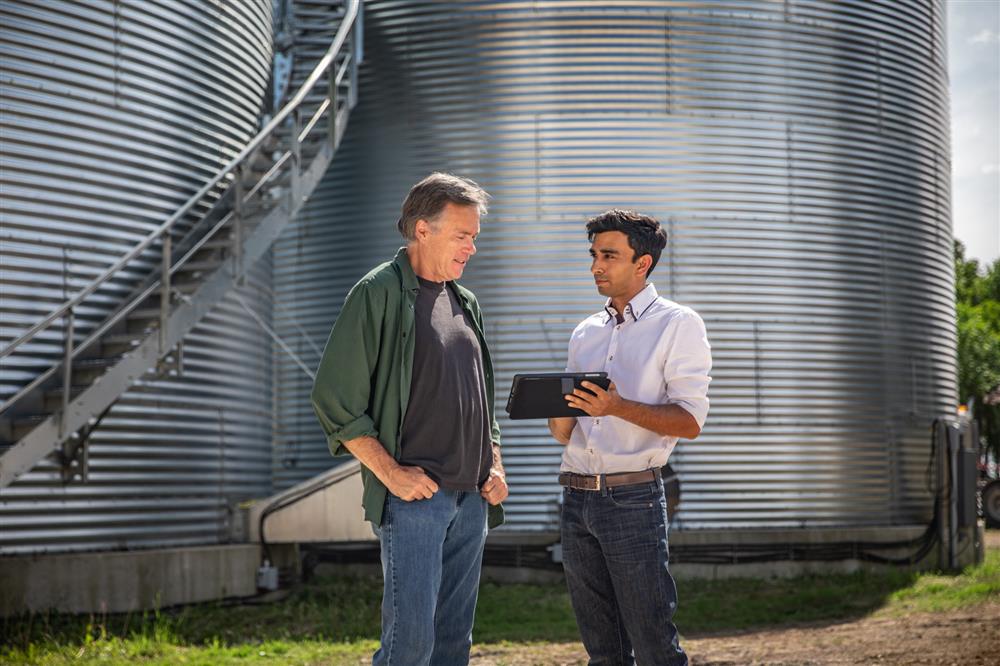WHY MAXIMIZING ONE DOESN’T NECESSARILY MAXIMIZE THE OTHER
Wednesday, February 23, 2022
Reference: Farm At Hand
 When you invest back into your farm, you want to feel confident that investment is going to reap rewards. That’s why it’s important to understand your farm’s profitability and return on investment (ROI) beyond your yield. Simply put, the ROI measures the value of any farm investment against its cost. If only it were that simple.
When you invest back into your farm, you want to feel confident that investment is going to reap rewards. That’s why it’s important to understand your farm’s profitability and return on investment (ROI) beyond your yield. Simply put, the ROI measures the value of any farm investment against its cost. If only it were that simple.Farming is bursting with variables that impact the ROI calculation, from unpredictable weather events to input costs and end-market sales pricing. Experts suggest the best way to achieve an accurate ROI is consistency in your record-keeping and calculation procedures. This includes leveraging digital farm management solutions to track expenses, sales and cash flow. The latest farm management software and mobile agriculture technologies can efficiently capture all your farm data so you can monitor, compare and benchmark it in both real-time and year-over-year from your preferred handheld device.

Your ROI is different from yield, profit and revenue – it’s a measurement of what value you’re gaining versus the costs you’re putting in. Yearly ROI calculations are likely to vary based on environmental factors, best management practices and other crop management tools such as irrigation and monitoring soil conditions. But through comparison, you’ll identify whether you’re putting your money where it’s most impactful.
“Understanding your historical information allows you to build strategic plans and optimize your input use across the farm,” says Garth Donald, Decisive Farming by TELUS Agriculture manager of agronomy. “With that understanding comes the knowledge to create sound yield goals while avoiding over or under-fertilizing for the crops you are growing.”
However, these are big decisions. Justifying these sustainable crop management changes becomes much more promising with a reliable data set, held within your farm management software.
“Your data needs to be in a usable form, in a one-stop-shop platform,” says Donald. “This makes it accessible to everyone who needs it no matter where they’re located.”
Your farm management system can help to streamline your ROI calculation through reliable cost and revenue capture and storage while simplifying the process of evaluating alternatives, understanding challenges and managing expectations with more predictable outcomes. Data-driven farming means stronger evaluation capabilities, including:
Cost of production per acre. Understanding how much the investment will cost at the per acre level, over how many acres and for how long.
Improvement per acre. How much you expect the investment to improve yield production per acre over time, thus boosting profit margins.
Grain pricing. Use pricing projections for each commodity to evaluate your improved profitability.
The well-known adage that you can’t manage what you can’t measure holds truer than ever in today’s competitive markets. When your farm management software is used to factor in as many of your farm’s unique elements – which can be more than just yield – you’ll continue to achieve a more consistent ROI. And that benchmarking can greatly increase your farm’s productivity and sustainability, year-over-year.
Read more about how farm data management software can help understand cash flow and profitability and revenue tracking in our Cost and Revenue Tracking blog series
Ready to get started with farm management software? Sign up today and enter your first 50 records with no commitment!
Sign up to stay connected
- News
- Property Alerts
- Save your favourite properties
- And more!
Joining Farm Marketer is free, easy and you can opt out at any time.
